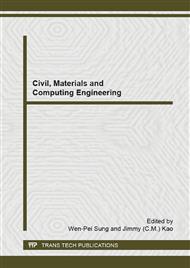p.895
p.899
p.909
p.913
p.918
p.922
p.926
p.930
p.935
Cold and Thermal Flow Field Analysis of Gasoline Engine Exhaust Port Based on CFD and RE
Abstract:
Exhaust passage is a significant part of the gasoline engine, its structure will affects the gas flow characteristics of the engine directly [1]. So, research and analysis of the exhaust tract is essential. In this paper, a detailed analysis of the flow field under cold state and hot state was made. For a start, the method of laser scanning and UG software were used to reverse modeling engine exhaust port and get the three-dimensional model. The next, the unstructured grid with local mesh refinement scheme was used to mesh this three-dimensional model with ICEM. After this, numerical simulations of the exhaust passage with five different valve lifts were carried out under thermal and cold conditions. Finally, comparing the velocity field and pressure field of the exhaust passage under cold state and thermal state, it can be find that the flow field under hot and cold state have similar characteristics. The results of this paper can provide a theoretical basis for following researches of the engine exhaust port.
Info:
Periodical:
Pages:
918-921
Citation:
Online since:
December 2014
Authors:
Keywords:
Price:
Сopyright:
© 2015 Trans Tech Publications Ltd. All Rights Reserved
Share:
Citation:


